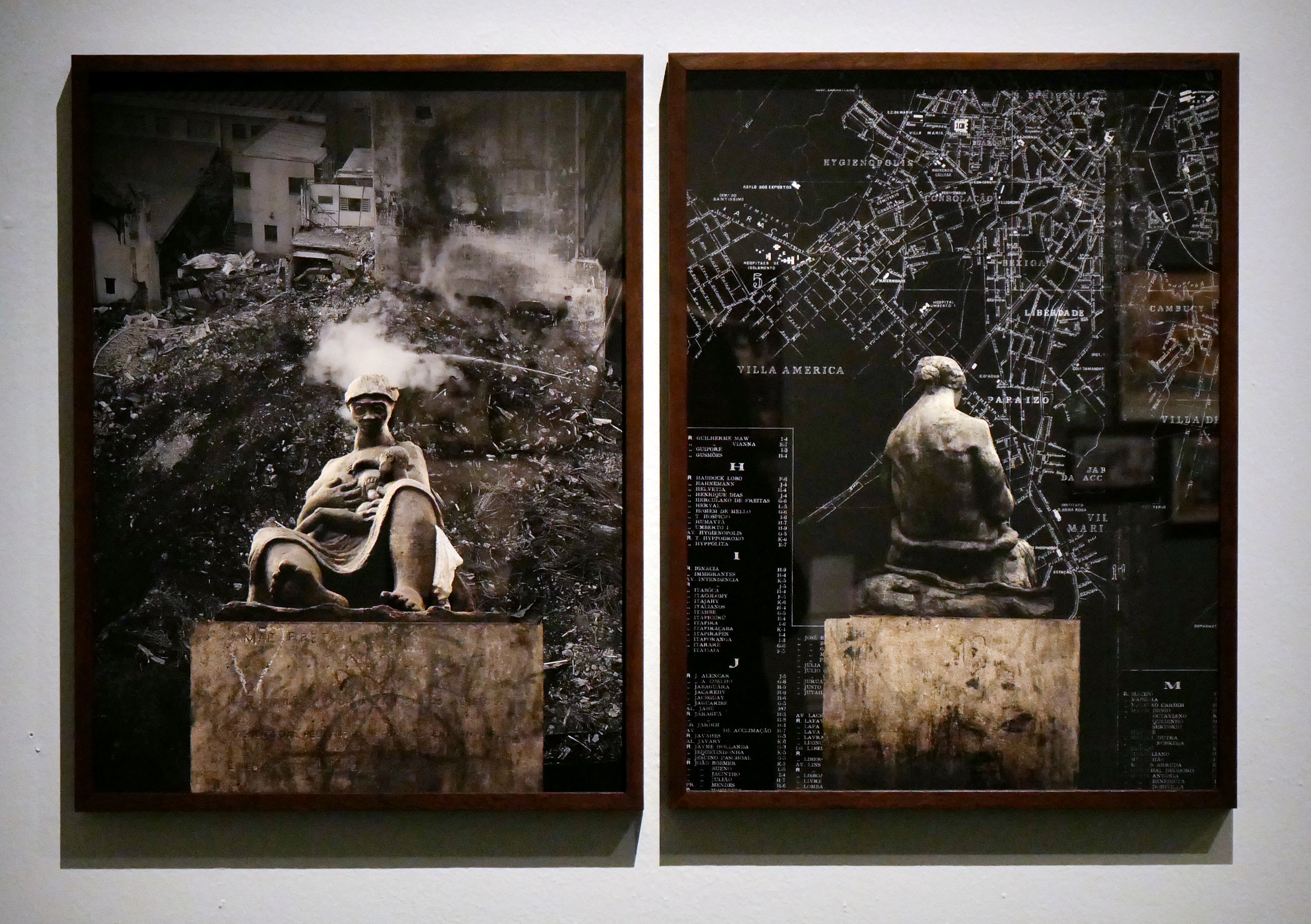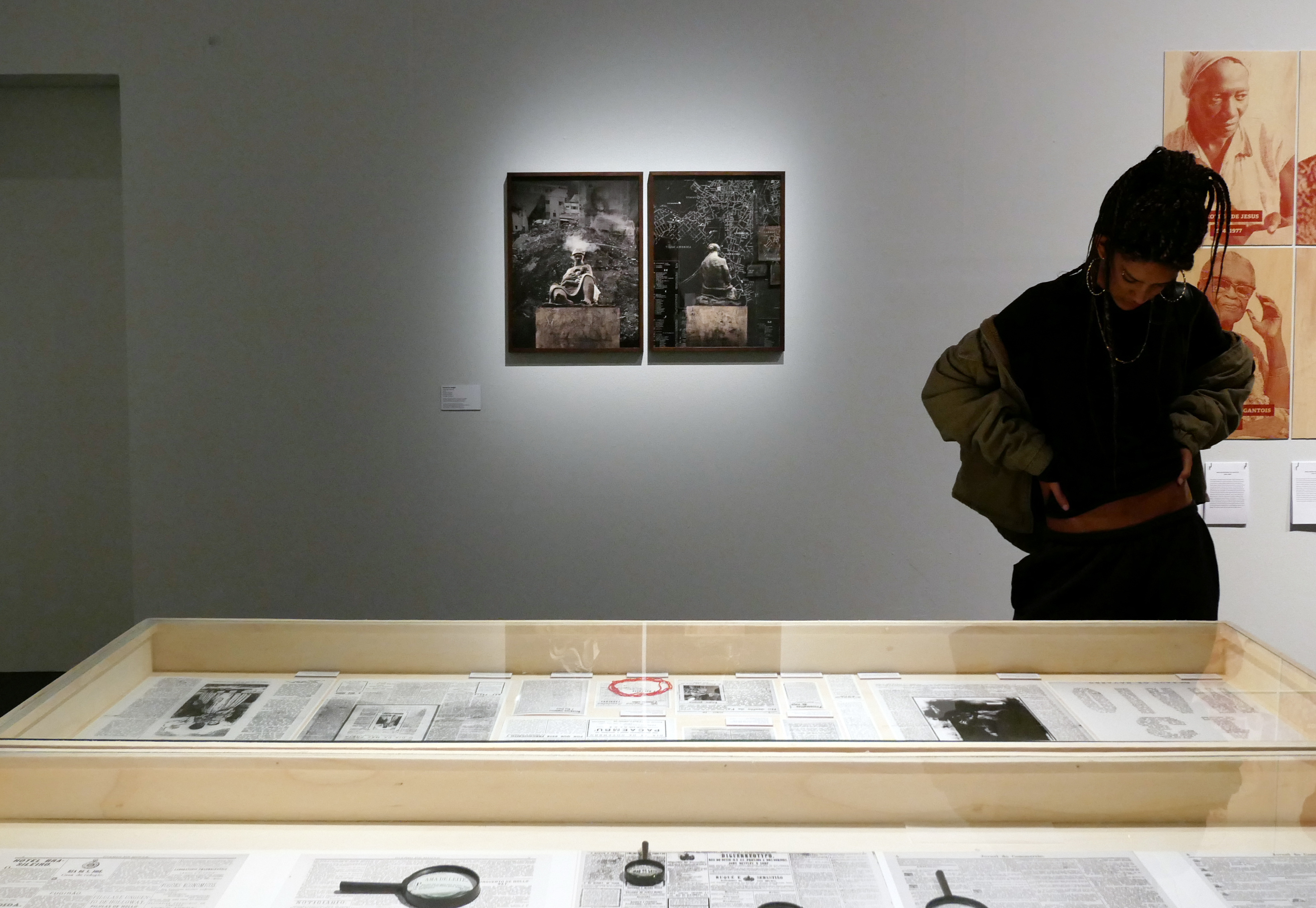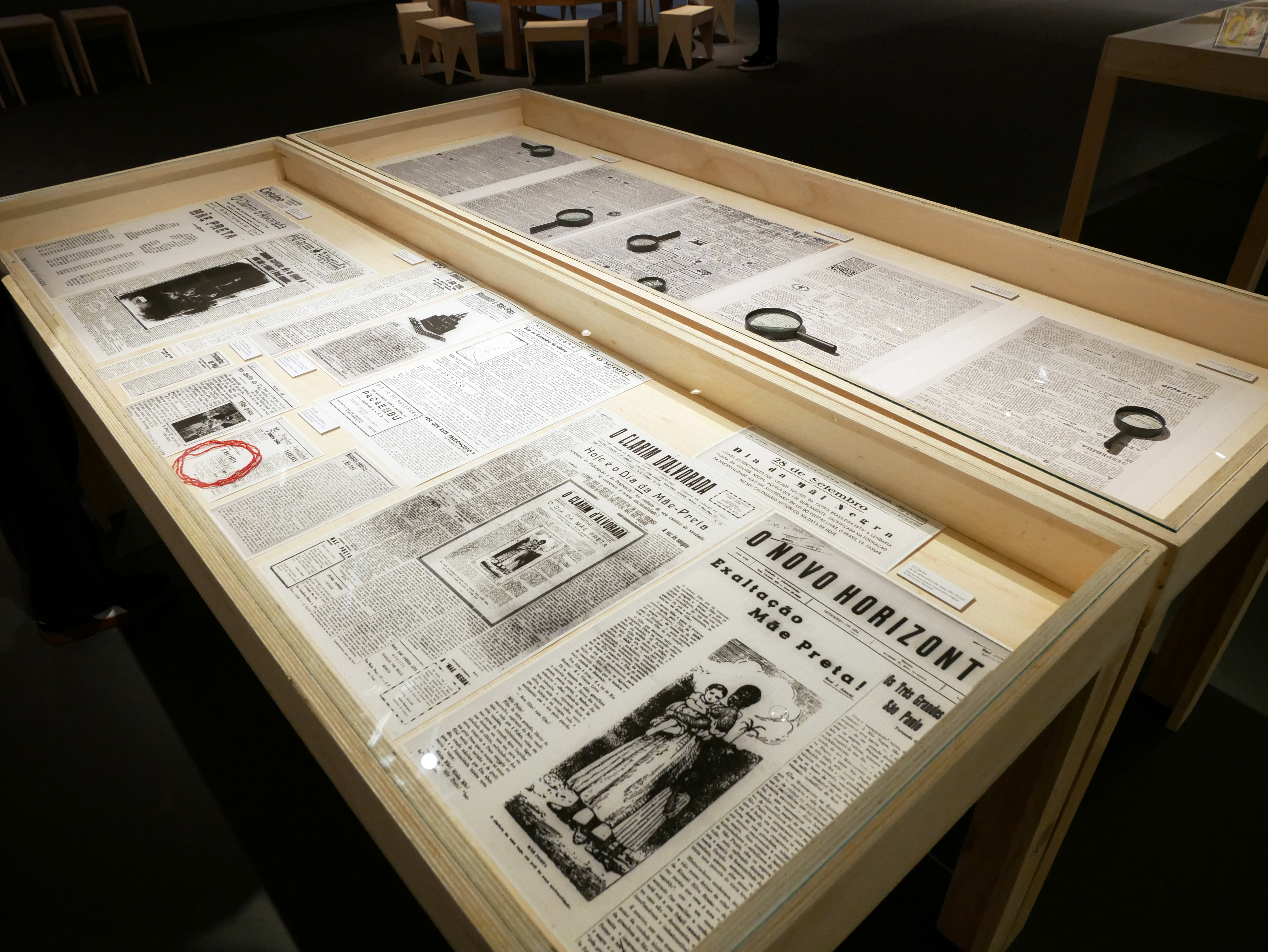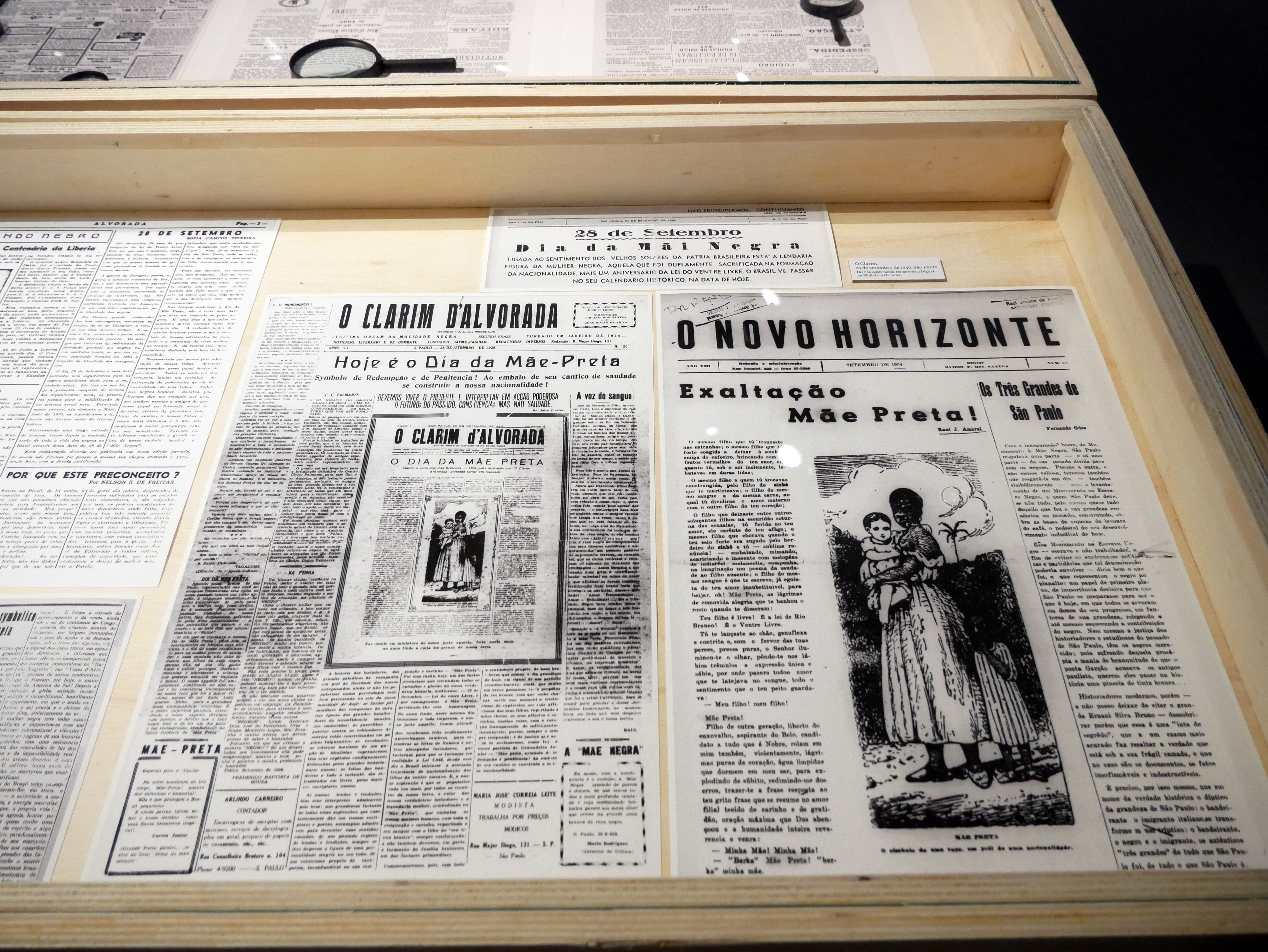Artworks
Ways of Erasing
Ways of Erasing
2018
Diptych
Photomontage
Foreground images: Monumento Mãe Preta, photographs by the artists
Background images: Mike Peel www.mikepeel.com - Wikimedia Commons
General plan of the City of São Paulo, 1905
And newspaper articles from the Black press in São Paulo, 1924-1954 | National Library Digital Press Archives
Ways of Erasing tells the trajectory of the Black Mother Monument in São Paulo built in 1953 in a square in the central part of the city.
The monument marks an important landmark among the very few landmarks of the memory of slavery in the colonial city center of São Paulo. It shows an attempt to reinscribe the memory of slavery in this region despite a slow and systematic erasure of this memory from the urban fabric due to successive waves of modernization. In one of the images, we use an old plan of the city as a way of remembering this geography.
The monument was built in 1953 by the Brazilian sculptor Julio Guerra, following a competition created at the request of Black political mobilization in the city, to honor the symbolic figure of the Black Mother as a way of recognizing the presence and the importance of the Black race in the historical construction of the country. The idea had in fact been suggested decades earlier, in 1924, by several actors within the Black community of São Paulo by the initiative of O Clarim D'Alvorada, the main newspaper of the Black press at the time. Newspaper articles from the time even show the positive reception of the idea among Black movements in the USA, commending Brazilians for taking a stance in honoring its Black population. The newspaper also suggested that a "Black Mother Day" be celebrated every year on September 28th, in memory of the Law of the Free Womb from 1871 that declared freed all children born from enslaved mothers.
The idea of the monument and the holiday came to a halt in 1930 when the election of Getúlio Vargas put a halt on Black political mobilization and initiated a campaign introducing the notion of Brazilian nationhood as a "racial democracy" where are all races were cordially connected to each other and formed a unique, harmonious whole. This became one of the first definitions of modernity in Brazil where the slave past and its legacies needed to be overcome in order to step into the future. The idea resurfaced at the end of the 1940s with a weakening Vargas government, and its construction in 1953.
Today, more than sixty years later, the monument gained a new albeit temporary significance, related to the notion of care. Since the collapse of a highrise building in front of the monument in May 2018, the statue has served as a place of refuge for those made homeless by the missing building, turning the square into a dystopic and desolate scene. This reveals the extreme inequality and housing problems in the continent's largest and wealthiest city.




